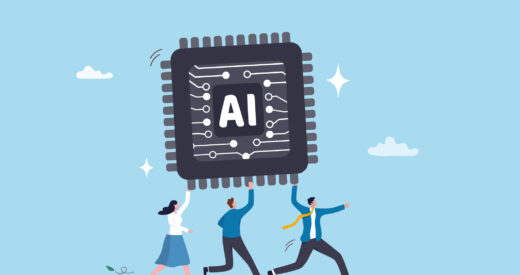Employee Resource Groups, or ERGs, have been steadily rising in popularity since 2020. According to Forbes, about 90% of Fortune 500 companies have launched employee resource groups, and many smaller companies are following suit. ERGs are a popular diversity, equity, and inclusion (DEI) initiative because they drive results. They increase workplace diversity, improve retention rates, and drive feelings of belonging.

Danielle David, Chief People Officer at CRB, says investing in employee resource groups has enabled the company to engage people around common interests across geographic locations. CRB is a multinational facility design, engineering, construction, and consulting firm for the life sciences and food and beverage industries.
“They provide such great outlets for our employees. Many of the ERGs do what we call community conversations, where they discuss different topics and people dial in remotely. It’s just a safe space for people to gather, to talk, and to learn,” David says. “Our ERGs have been valuable for our employees and really have brought a good, strong sense of connection to a lot of our folks.”
To realize the full benefits of ERGs, it’s important to keep a few best practices in mind as your organization builds an inclusive workplace.
Position ERGs as a pipeline for employee feedback.
High-performing ERGs are in a unique position to gather feedback from their members and communicate anxieties, concerns, and questions to company leadership. This feedback can then be addressed via policy changes or additional resources. Enabling avenues for feedback lets employees know they have a say at the organization. Remember, diversity is inviting folks to sit at the table, inclusion means ensuring all voices are heard.
Use ERGs to boost employee diversity.
Since ERGs are designed to meet the needs and share the experiences of underrepresented groups, they are well positioned to increase employee diversity in a company’s recruiting, hiring, career development, and mentorship programs. In fact, a recent study by WorkHuman reported that 45.8% of employees said that the presence of ERGs at a company would make them more likely to accept a job at a company, with the most common reason being that it reflects the company’s values of diversity and inclusion. ERGs can also help with relevant recruiting initiatives such as partnering with HBCUs or women-centered professional organizations. ERGs directly impact a company’s ability to recruit and retain diverse top talent.

Ensure ERGs are serving and supporting the specific groups they represent.
ERGs should offer a safe and trusted space for employees to discuss sensitive topics and ask questions that they may not feel comfortable asking their managers. ERGs can also address career concerns that are specific to certain groups. For example, when a global survey conducted by Workday revealed that Asian women employees needed a career journey program, the company partnered with its three Asian ERGs to address the unique challenges and obstacles faced by its Asian women employees.
Establish ERGs as spaces to share experiences and personal stories.
Everyone needs to vent from time to time, and ERG members can find solace in knowing they aren’t alone in their lived experience. They can learn how others responded in certain situations and gain insight into best practices for speaking up, resolving conflicts, or reporting incidents. ERGs empower members to take action and use their collective power to change workplace culture.
The widespread adoption of ERGs is a testament to their effectiveness in building inclusive workplace cultures. They have the ability to increase belonging among current employees and attract new top talent. As the popularity of ERGs continues to rise, their positive impact on workplace inclusion remains undeniable.
For more information on establishing and maintaining effective employee-led groups, download our guidebook, The Employee Resource Group (ERG) Toolkit: How to Establish and Maintain DEI-Focused Groups, available in TDM Library. TDM Library provides your ERG a roadmap to success with guidance on building an ERG from the ground up, pitfalls to avoid, programming ideas, getting executive buy-in, and more.
Kaela Sosa is co-founder and Manager, Curriculum and Programming at The Diversity Movement. Her expertise includes psychology, gender identity and sexual orientation and racial identities. Kaela has written and spoken about a range of topics: active allyship, the inclusive talent lifecycle, disability etiquette, LGBTQ+ inclusion and inclusive language. At The Diversity Movement, she leads the development and execution of learning programs, including digital learning, online courses, certificate programs and certification opportunities. Connect with or follow Kaela on Linkedin to learn more.




